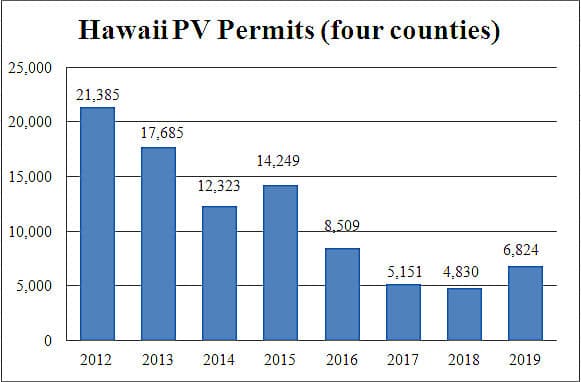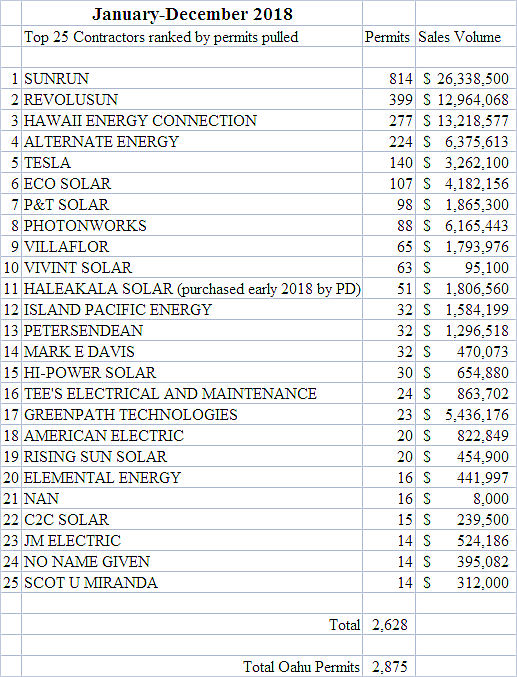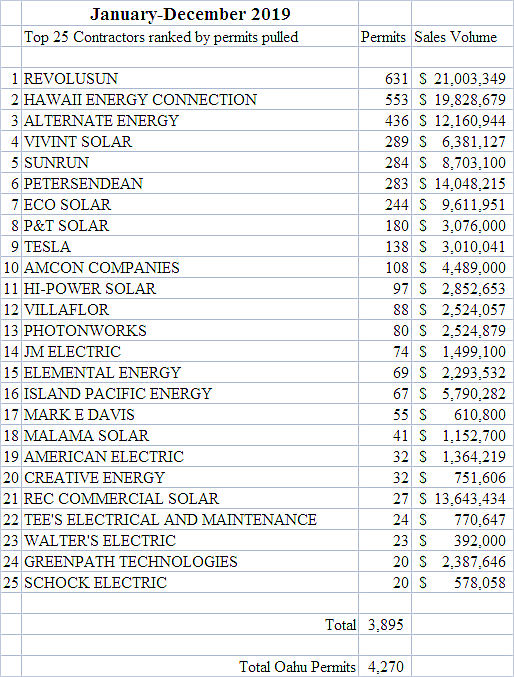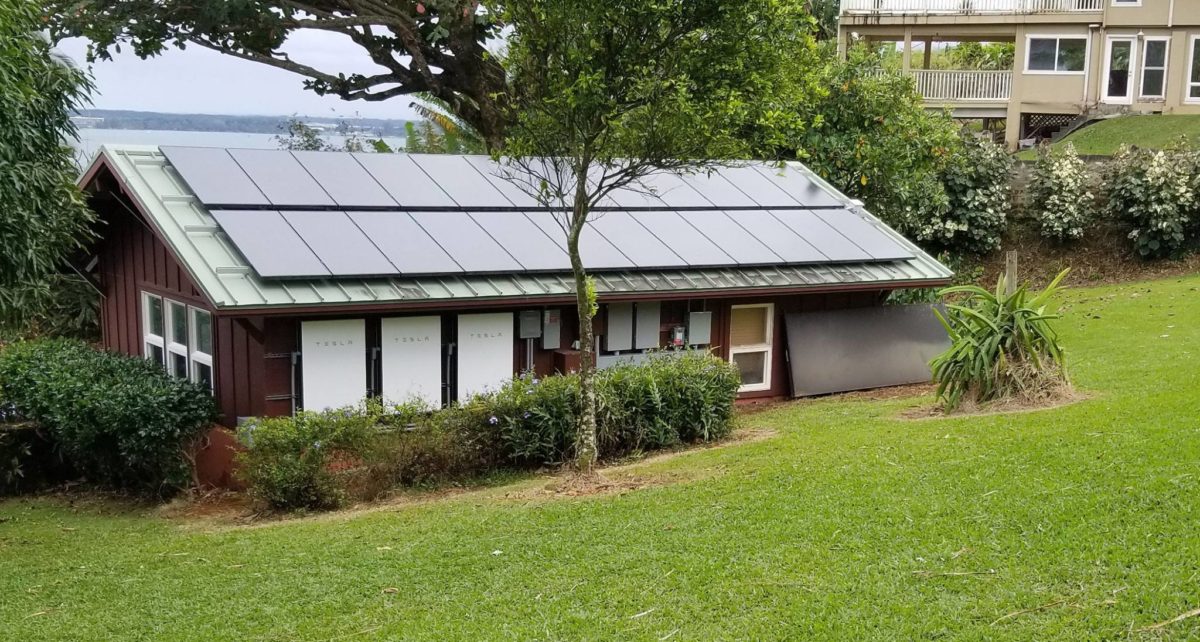The Hawaii Solarcoaster got back on track in 2019 after two lackluster years.
Across the state, Hawaii’s building and electrical departments issued a total of 6,824 permits for solar electric systems last year compared to 4,826 in 2018, an increase of 41% — making 2019 the best year since 2016.

Oahu led the way with a year-over-year bump of 48% with 4,270 permits in 2019, compared to 2,875 in 2018.
And the increase in the stated dollar value of PV projects was similarly impressive. Last year that value came to $314.9 million compared to $215.1 million the previous year — mightily assisted by a handful of utility-scale projects.


data compiled by ProVision Solar
Of the top five permit pullers on Oahu, the first three, RevoluSun, Hawaii Energy Connection and Alternate Energy are locally controlled and operated while Sunrun and Vivint Solar are mainland-based.
Strikingly, after being on top from 2016 to 2018, Sunrun experienced a drop-off of 65% last year compared to 2018 while Vivint Solar returned strongly after a several year absence.
Neighbor Islands
In Maui County, permits were up 62%, 951 last year compared to 587 in 2018.
On Kauai, permits were up 74%, 638 last year compared to 267 in 2018.
While on the outlier Big Island, PV permits were actually down 3% last year, 965 compared to 997, owing to Sunrun’s drop of nearly 50% on the island. Removing the Big Island’s numbers from the data set, the rest of the field was up 72% year over year.
Energy storage deployment accelerates
While the local solar industry has yet to make any real dent in the urgent need to add battery storage to the existing tens of thousands of net energy metered systems across the state (which would be a big positive in making the electric grid less vulnerable), we did see an increase in new solar electric systems that included storage. Last year on Oahu, 73% of new permitted systems included batteries compared to 62% in 2018 with similar percentages on the other islands.
Tax credits, where for art thou?
Human beings tend to make decisions out of fear of losing something of value as opposed to making a purchase to improve value. One of the most likely causes for the improved permit and sales numbers in 2019 was the motivation on the part of consumers to accrue the 30% Federal Investment Tax Credit before it dropped to 26% at the beginning of this month. Barring new legislation in Washington and a presidential signature, the ITC will drop another four percentage points next January 1. Will the prospect of this loss serve as motivation to go solar PV this year as it did last year?
Regarding Hawaii state tax policy toward renewable energy, there’s currently no sunset date for the Renewable Energy Technologies Investment Tax Credit. That said, there have been efforts by our legislature every year over the past few years to adjust and start a ramp down of the RETITC.
There have also been efforts to create a separate tax credit to encourage the deployment of energy storage to existing solar electric projects with these bills dying in a conference committee each of the past four years. As much as I’d like to make the case for better prospects for the 2020 legislative session, I can’t and won’t, especially in light of others in the solar industry having different goals and priorities. Unfortunately, it may take a Puerto Rico-type tragedy with a devastated electric grid post-natural disaster in order to force us out of our complacency and act to dramatically ramp up the deployment of energy storage capacity.
Unpredictability, thy name is Solarcoaster
I’ve been in the renewable energy field since 1978, doing solar in Hawaii since the early 1980s and been full-time at my company on the Big Island going on 20 years. I have been data-mining and crunching the numbers diligently for at least the past ten years.
And yet, with a definite degree of humility, I must confess to not being able to predict what the next year will hold for the Hawaiian Solarcoaster.
Maybe, just maybe, we’re in for another year or two of upward movement.
***
Marco Mangelsdorf has been in the renewable energy field for nearly four decades and is currently president of ProVision Solar. He has taught energy politics at UH Hilo and the University of California and is a director and secretary of the Hawaii Island Energy Cooperative, which seeks to convert the Big Island’s electric utility to a co-op.
This content is protected by copyright and may not be reused. If you want to cooperate with us and would like to reuse some of our content, please contact: editors@pv-magazine.com.









Thanks